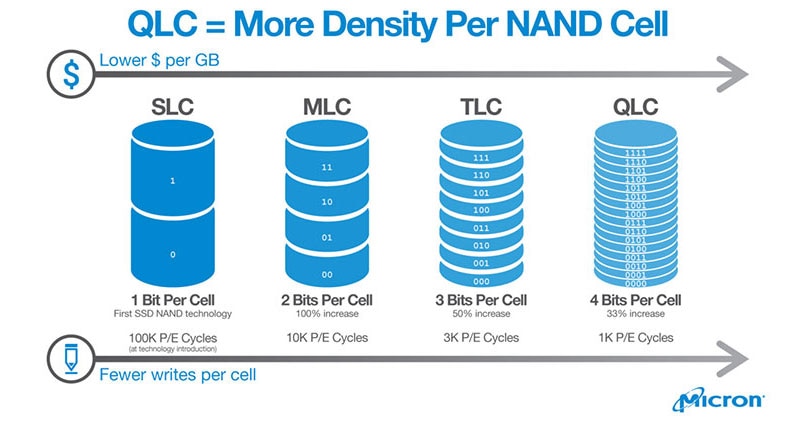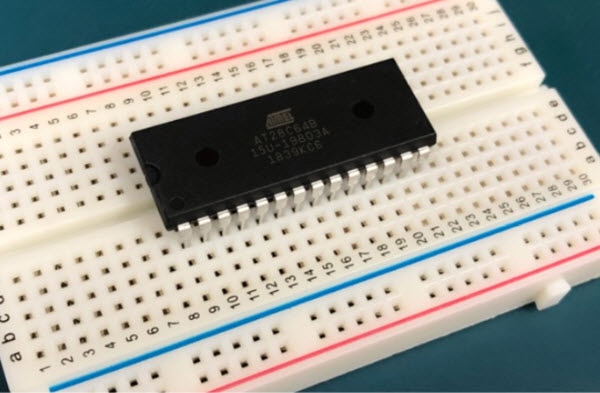Exploring the Functionalities and Characteristics of Read-Only Mode (ROM) Memory Cards
What are ROM Memory Cards?
 (Image source: Flexxon)
(Image source: Flexxon)
ROM (Read-Only Mode) memory cards exhibit non-volatile characteristics, ensuring the preservation of their contents even in the absence of a battery or power supply. These cards cannot be overwritten, or modified, guaranteeing data integrity and enhancing security measures, making them indispensable for applications where data permanence is crucial. Industries such as finance, cybersecurity, and healthcare rely on the reliability of ROM memory cards to safeguard critical information.
Functionalities of ROM memory Cards
 ROM memory cards offer permanent data storage, data integrity, and security functions. They are widely used in various applications, including firmware storage, bootable storage, system configuration storage, and data distribution. (Image source: Flexxon)
ROM memory cards offer permanent data storage, data integrity, and security functions. They are widely used in various applications, including firmware storage, bootable storage, system configuration storage, and data distribution. (Image source: Flexxon)
The following are the functions offered by ROM memory cards:
- Permanent Data Storage
ROM memory cards are designed to provide longevity and non-volatile storage of data. Once data is written to a ROM memory card, it remains stored permanently. - Secure Stored Data
ROM memory cards prevent modifications, deletions, or alterations to stored data. Ensure data integrity and enhance security by protecting against unauthorized changes. - Firmware and Software Storage
ROM memory cards are commonly used to store firmware and software in various electronic devices. They serve as a reliable and secure medium for storing essential system software, drivers, and other critical components. - Bootable Storage
ROM memory cards can be used as bootable storage devices, enabling the system to start up and load the operating system or necessary software.
(This feature is particularly valuable for embedded systems) - Data Distribution and Archival
ROM memory cards are used for distributing software, multimedia content, and other data that should remain unchanged during distribution. - Secured Partitioning
Read-Only functionality, reminiscent of CD/DVDs but modernized in USBs, SSDs, SDs, and microSDs, ensures data accessibility while safeguarding against unauthorized tampering.
Benefits of ROM memory cards
ROM memory cards offer advantages such as data longevity, integrity, reliability, compatibility, and versatility, making them critical solutions for a wide range of applications.
The advantages of utilizing ROM memory cards include:
- Data Longevity
ROM memory cards provide permanent storage for data and programs, independent of power status. It allows easy removal and replacement without data loss. - High Compatibility
ROM memory cards, such as microSD and SD cards, are widely supported by various devices, including smartphones, cameras, and computers. Offering broad compatibility, allowing for easy data interchange and sharing between different devices. - Swift Performance
ROM memory cards offer high sequential performance that amplifies read and write operations - Cost-Effective
ROM memory cards offer affordability due to their simplistic design, as they do not require complex read/write circuitries found in other memory cards. - Versatility
ROM memory cards accommodate various data types, including multimedia, software, firmware, and configurations. They enable flexible data storage and effortless data transfer between devices.
Conclusion
In conclusion, ROM memory cards provide cost-effective and permanent data storage solutions. However, it is essential to consider their inherent limitation of not allowing changes or modifications to written data is an intentional characteristic, as ROM memory cards are specifically tailored for applications where data permanence and integrity are paramount, making them ideal for scenarios where data modification is not required or desired.

Have questions or comments? Continue the conversation on TechForum, DigiKey's online community and technical resource.
Visit TechForum








